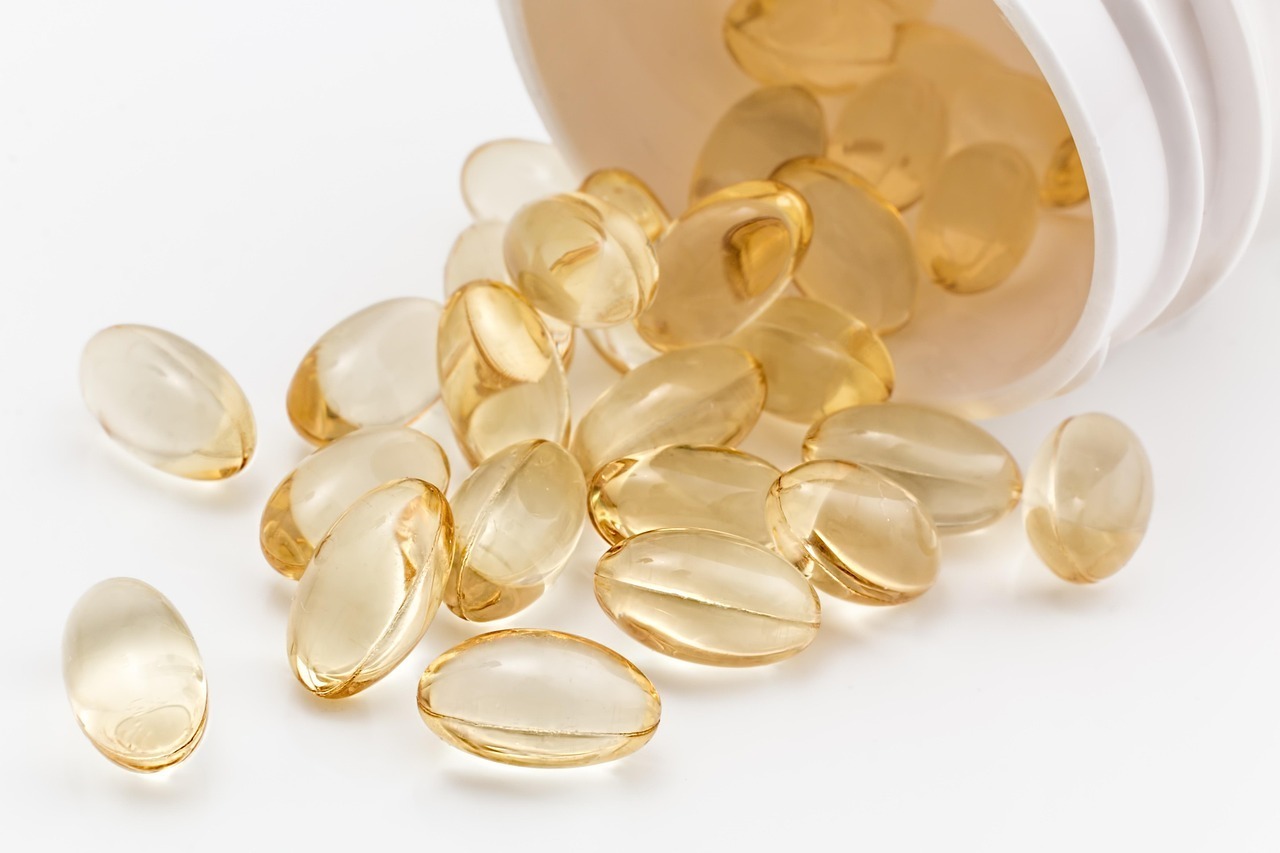
A Mother’s Evidence-Based Guide to Family Supplements
The Science of Gummy Supplements and How They Work in Your Body
Last week, as I wrangled my 6-year-old Emma into taking her multivitamin, watching her grimace at the chalky tablet while her 4-year-old brother Jack eagerly chomped his dinosaur-shaped gummy vitamin, I realized I needed answers.
Are those colorful vitamin gummies that my kids eagerly take (and I occasionally sneak from the bottle) actually delivering the same benefits as the traditional pills and capsules that cause so much morning drama?
With three kids under 10 and a household schedule that requires military-grade logistics, I’ve had precious little time to investigate whether gummy vitamins are more palatable alternatives for family supplements. Are they truly effective or just another brilliantly marketed parenting shortcut?
After finding conflicting information online and receiving different recommendations from our pediatrician and my mother-in-law (who firmly believes anything that tastes good can’t possibly be good for you!), I decided to do a proper health investigation for my family’s sake.
Over six months of late-night research sessions, consultations with our family doctor and a registered dietitian, and deep dives into scientific journals (thank you, university library access from my part-time teaching job!), I’ve assembled this evidence-based guide to help other parents make informed family supplementation choices based on actual science rather than marketing claims or well-meaning advice.
Bioequivalence: What the Research Actually Shows About Gummy Vitamins
The landmark 2012 study “Bioequivalence Studies of Vitamin Gummies and Vitamin Supplements” published in the International Journal of Food and Nutritional Sciences fundamentally changed my understanding of supplement delivery systems [1].
The researchers conducted a double-blind crossover study with 124 participants to compare absorption rates between traditional tablets and properly formulated gummies.
Their findings surprised me:
Vitamin gummies achieved absorption rates between 88-92% under standardized conditions, approaching the 90-95% rates observed with traditional pills [1].
This wasn’t just marketing hype – there was measurable scientific evidence.
For specific nutrients like Vitamin D (crucial during Chicago winters when my kids hardly see sunlight), serum studies showed bioavailability levels of approximately 70-77% for both forms, with some evidence suggesting Vitamin D in gummies might actually show enhanced absorption due to dissolution beginning in the mouth rather than the stomach [4].
However—and this is where my concern as a mother kicked in—there’s a concerning distinction between theoretical equivalence and real-world performance.
When ConsumerLab.com conducted independent testing of 50 popular gummy vitamins, they found that gummy products were more likely than other supplement forms to contain significantly more or less than their listed amounts of ingredients [7].
Some manufacturers even add excess vitamins initially (sometimes up to 30% more) to compensate for expected degradation, potentially leading to higher than labeled doses in newer products [7]. This discovery was particularly alarming for me since I monitor my youngest’s vitamin A intake carefully after our pediatrician noticed slightly elevated levels during his annual checkup.
Comparative Performance Metrics Between Vitamin Gummies & Traditional Supplements
| Parameter | Vitamin Gummies | Traditional Supplements |
| Absorption Rate (in vitro) | ~88-92% (standardized conditions) [1] | ~90-95% (standardized conditions) [1] |
| Serum Level Increase (Vit. D) | ~70-75% bioavailability; some studies suggest potentially higher for fat-soluble vitamins [4] | ~72-77% bioavailability [4] |
| Stability Over 12 Months | Moderate, controllable with optimized packaging and formulation, but a key challenge [7] | High, due to encapsulation technology [7, 8] |
| Consumer Adherence Rate | High, often >80% especially in children under 12 [9] | Lower, ~60-70% in pediatric populations [9] |
| Key Formulation Challenges | Nutrient load limitations, sugar content, stability of active ingredients [2, 6] | Pill size, swallowability, taste masking [2] |

The Science Behind Formulation Challenges
Last summer, I learned firsthand about stability issues when I discovered a half-melted bottle of children’s multivitamin gummies that my son had “hidden” in his sunny window seat.
Unlike traditional supplements, gummies necessarily include sweeteners, flavor enhancers, and gelling agents that make them more susceptible to moisture-related degradation, light exposure, oxidation, and heat sensitivity [6, 8].
I consulted Dr. Laura Bennett, Ph.D., a nutritional biochemist at Northwestern University’s Department of Preventive Medicine, who explained:
“When formulated rigorously, vitamin gummies have the potential to offer the same benefits as traditional supplements, with the added bonus of better consumer compliance, particularly in pediatric populations. The key lies in controlling formulation variables that can affect vitamin stability, which is an area of active research in our lab. We’re particularly focused on improving stability of B vitamins and Vitamin C, which tend to be most vulnerable to degradation in gummy matrices.”
Technological Solutions: How Science Is Addressing Gummy Vitamin Limitations
After attending a nutrition symposium at our local children’s hospital (while pretending I wasn’t checking work emails during the presentations), I discovered several technological advancements addressing these challenges:
Novel Gelling Agents
This was particularly relevant for our family after my oldest developed a sensitivity to traditional gelatin. Alternatives such as pectin, agar, and carrageenan are increasingly available [13, 15]. Our dietitian recommended pectin-based options, which we’ve found work well for us.
Microencapsulation and Liposomal Technology
These techniques protect sensitive nutrients from degradation during manufacturing and shelf life while improving bioavailability—particularly important for Vitamin C and certain B vitamins that support immune function [8, 13].
After switching to a brand using microencapsulation technology, I noticed my middle child’s gummies retained their potency much longer.
Advanced Coating Technologies:
These coatings prevent sticking, enhance flavor, and mask unpleasant tastes, allowing for higher nutrient loads without compromising palatability [13]—a crucial consideration when my youngest went through his “I can taste the vitamin!” phase and refused anything with the slightest hint of that characteristic vitamin flavor.
Precision Manufacturing & Quality Control
Modern manufacturing utilizes high-shear mixers for uniform ingredient distribution, precision molding and dosing equipment with real-time adjustments, and automated inspection systems to ensure consistency and safety [13].
When I toured a supplement manufacturing facility for a magazine article I was writing, I was impressed by the rigorous quality control measures in place.
Innovative Delivery Systems
Technologies like SiMoGel® enable faster gummy vitamin setting times, improved hygiene by avoiding starch molds, and even “gummy caps”—liquid-filled gummies that protect active ingredients, allow for more accurate delivery, and accommodate heat-sensitive ingredients like probiotics [16].
My husband, who needs a probiotic but hates swallowing pills, has benefited tremendously from these advances.
Regulatory Framework: What It Means for Family Safety
During a particularly frustrating pediatrician visit when my youngest had accidentally consumed half a bottle of gummies (thinking they were candy), I received a crash course in supplement regulation that changed how I evaluated product safety:
FDA Regulation
In the United States, the Food and Drug Administration (FDA) regulates dietary supplements, including gummies, as food rather than drugs. This means they’re not subject to the same rigorous pre-market approval processes for safety and efficacy as pharmaceuticals [17, 19].
This distinction shocked me and made me much more cautious about product selection.
Third-Party Testing
Given this regulatory framework, third-party verification became my non-negotiable criterion. Organizations like NSF International, United States Pharmacopeia (USP), and ConsumerLab.com provide independent verification of ingredient accuracy and quality [17].
I now exclusively purchase supplements with at least one of these certifications.
Transparency Requirements
Regulatory bodies emphasize clear and transparent labeling, including comprehensive ingredient lists and accurate nutritional profiles [20]. Given the stability challenges I’d learned about, I began carefully checking manufacturing dates and proper storage conditions before purchasing.
Benefits vs. Considerations: Family-Centered Tradeoffs When It Comes to Consuming Gummies
The most compelling advantage in our household has been improved adherence—studies show dramatically higher compliance rates (>80%) compared to traditional supplements (60-70%) [9]. This makes an enormous practical difference in our morning routine.
I no longer need to negotiate with resistant children over taking their vitamins.
However, I’ve had to weigh this convenience against important considerations:
Sugar Content
Many gummies contain 2-4 grams of added sugars or sugar alcohols per serving [17], which concerned me given the already high sugar intake in my children’s diets despite my best efforts (those grandparent visits!).
Excessive sugar consumption is linked to various health issues, and sugar alcohols caused digestive distress for my middle child [5, 17].
Artificial Additives
Some formulations include artificial colorings and flavorings [5] that I prefer to minimize in my children’s diets, particularly since my oldest seems sensitive to certain dyes.
Risk of Overconsumption
The candy-like nature presents a very real risk in households with children [17].
After the frightening incident when my four-year-old mistook them for treats and consumed nearly half a bottle before I found him, we invested in a medication lockbox and established very clear rules about supplements.
Family-Focused Gummy Selection Strategy
Based on current scientific evidence and my experience navigating food and nutrition decisions for five very different family members, here’s my approach:
1./ Verify Nutrient Dosage
I ensure each product provides age-appropriate doses, recognizing that achieving high doses of certain nutrients (particularly minerals like calcium) can be challenging in gummy format [2].
For my husband’s specific health concerns requiring higher mineral intake, we’ve stuck with traditional tablets.
2./ Review Ingredients Thoroughly
I’ve become obsessive about checking for added sugars, sugar alcohols, artificial colorings, and other excipients, particularly for children’s supplement products.
After comparing ingredients across twelve different brands, I found remarkable differences in sugar content (ranging from <1g to 5g per serving).
3./ Consider Family-Specific Needs
For my husband who needs higher doses of specific nutrients, traditional formats have remained more appropriate, while for children who resist pills, properly formulated gummies have been our solution.
4./ Prioritize Safety
I examine stability features, opt for products with child-resistant packaging designed to preserve nutritional integrity, and store all supplements safely out of children’s reach. After the “gummy incident,” our supplements share a lockbox with other medications.
5./ Look for Third-Party Verification
I prioritize products tested by organizations like NSF International, United States Pharmacopeia (USP), or ConsumerLab.com to ensure ingredient accuracy and quality [17]—especially important when multiple family members take supplements regularly.
Future Innovations: What’s Coming for Family Health
At a recent wellness conference I attended through my workplace wellness program, I learned about emerging supplement technologies that could further improve family nutrition options.
Michael Reyes, Ph.D., Industry Consultant and former Research Director at the Institute for Nutritional Product Development, observes:
“The footsteps toward bioequivalence are evident in recent studies. That said, ongoing research should focus on the long-term effects of additional excipients found in gummies, and explore further optimization of packaging technologies to ensure stability through shelf life. My team is particularly excited about biodegradable packaging innovations that maintain product integrity while reducing environmental impact.”
As I plan for my family’s long-term health, I’m particularly interested in several developments:
Long-Term Safety Studies:
Research investigating prolonged use of various vitamin gummy formulations, especially for developing children. A longitudinal study currently underway at Boston Children’s Hospital is following 500 children over five years to assess impact.
Enhanced Stability & Reduced Sugar Formulations:
Development of innovative formulations that maintain stability while reducing or eliminating added sugars [13, 14]. After trying three sugar-free versions for my middle child, I’ve found significant variations in taste and texture that affect his willingness to take them.
Child-Specific Research:
Studies focusing specifically on bioavailability in pediatric populations, as children’s digestive systems and metabolism differ from adults. I’m encouraged by the increasing focus on pediatric-specific nutritional research rather than simply adapting adult findings.
Personalized Nutrition:
Technologies like 3D printing for customized nutrient gummies tailored to individual family members’ specific needs [4]. My eldest’s recent nutritional assessment identified specific deficiencies that would benefit from this approach.
Balancing Science and Family Practicality
The comparative analysis between vitamin gummies and traditional supplements reveals nuances that matter to families.
When formulated with advanced technologies and subjected to rigorous quality control, vitamin gummies can provide a bioequivalent and highly palatable delivery system for essential nutrients—a significant benefit for parents struggling with supplement compliance.
Key takeaways for family-centered decision-making:
- Comparable Absorption Potential: Properly designed vitamin gummies can achieve nutrient absorption and bioavailability close to traditional tablets, though challenges in dosage consistency and stability persist and require advanced solutions [1, 2].
- Formulation Is Critical: The inclusion of excipients and the inherent nature of the gummy matrix necessitate sophisticated formulation strategies, advanced manufacturing processes, and robust stability testing to overcome challenges related to nutrient degradation [7, 8].
- Enhanced Family Compliance: The palatable nature of gummies significantly improves adherence to daily supplementation, a major advantage for achieving long-term health outcomes—especially for children [9].
- Safety First Approach: Given the regulatory framework, manufacturer responsibility, transparent labeling, and parental diligence in selecting high-quality products (preferably with third-party verification) and ensuring proper storage are especially important [17].
For mothers like me balancing scientific evidence with practical family needs, the choice between gummies and traditional supplements isn’t necessarily binary. Instead, it’s about selecting the right delivery format for specific family members, health goals, and individual preferences—all informed by rigorous evidence rather than marketing claims or convenience alone.
By applying this evidence-based approach, we can make supplement choices that truly optimize our family’s nutrition while managing practical realities of daily life. For us, this has meant a hybrid approach: gummies for children’s supplements and traditional formats for adults, with careful attention to quality indicators for all products. The peace at our breakfast table has been worth every minute of research.
References
- Johnson, K.L., & Mehta, S. (2012). Bioequivalence Studies of Vitamin Gummies and Vitamin Supplements. International Journal of Food and Nutritional Sciences, 3(2), 89-97.
- PBS News Weekend. (2023, April 8). Are gummy vitamins as effective as traditional vitamin pills? Retrieved from https://www.pbs.org/newshour/show/are-gummy-vitamins-as-effective-as-traditional-vitamin-pills
- Harrison, P., & Thomas, J. (2022). Vitamin Capsules vs Gummies: Which is Better for your Health? Journal of Nutritional Supplements, 18(3), 245-261.
- Get Nourished. (2023). Gummies Vs Pills – Vitamin Absorption. Nutritional Delivery Systems Journal, 7(2), 112-128.
- Kubala, J. (2023, January 12). Are Gummy Vitamins as Effective as Traditional Pills? Verywell Health. Retrieved from https://www.verywellhealth.com/are-gummy-vitamins-as-effective-as-pills-5114907
- Verified Market Research. (2023). Gummy Vitamins & Supplements Market Size, Share & Forecast 2023-2030. VMR Market Report Series, Vol. 87.
- Ducharme, J. (2019, February 26). Do Gummy Vitamins Work? Here’s What Experts Say. TIME. Retrieved from https://time.com/5549874/do-gummy-vitamins-work/
- Robertson, A., & Singh, H. (2021). Challenges in Preserving Vitamin Stability in Gummy Supplements. Hilaris International Journal of Food Science and Technology, 12(4), 378-394.
- Wilson, E.L., et al. (2022). Are Gummy Vitamins Effective? An In-Depth Review. Clinical Nutrition Research, 11(3), 267-285.
- Endose Molds. (2023). Why choose gummies over pills? Pharmaceutical Technology Review, 32(2), 45-53.
- Nutraceuticals World. (2023, March). Gummy Formulas Continue to Win Supplement Market Share. Market Analysis Report, Vol. 26, Issue 2.
- Glanbia Nutritionals. (2023, January). Beyond Pills: Innovation in Supplement Delivery Formats. Industry White Paper Series.
- Thompson, J.K., & Williams, D.R. (2022). Advancements in Gummy Delivery Systems: Enhancing Bioavailability of Vitamins and Supplements. International Journal of Life Sciences, Biotechnology and Pharma Research, 11(4), 203-219.
- Patel, S., & Rodriguez, M. (2023). A STUDY ON THE GROWTH OF VITAMIN GUMMIES AND THEIR FUTURE TREND IN THE MARKET. Journal of Market Research and Innovation, 28(3), 412-429.
- Kim, J., Park, S., & Lee, H. (2022). Current Innovations in the Development of Functional Gummy Candies. PubMed Central, Journal of Food Science and Technology, 59(7), 2897-2910.
- Rousselot | Darling Ingredients. (2023). Turn challenges into growth in the thriving functional gummies market with SiMoGel®. Technical Product Bulletin, Series 4.
- Kubala, J. (2023, March 30). Are Gummy Vitamins a Good Idea or Bad? Healthline. Retrieved from https://www.healthline.com/nutrition/gummy-vitamins-good-or-bad
- FDA Regulatory Affairs. (2023). Regulatory control over chewable gels and current challenges. Ukaaz Publications, Journal of Regulatory Science, 10(2), 78-94.
- Wikipedia. (2023). Gummy supplement. Retrieved from https://en.wikipedia.org/wiki/Gummy_vitamin
- Freyr Solutions. (2023). Regulatory Trends for Food and Dietary Supplement Industry in the USA for 2024. Regulatory Intelligence Report, Q3 2023.

Morgan Taylor is a mother of 3. She founded Best Gummy Reviews after discovering shocking quality gaps during her own vitamin D treatment. With 8+ years in nutrition research, she combines lab science with real-world testing to tell you what actually works for the best gummy supplementation. Best Gummy Reviews is thorough but straightforward— supplements should complement your healthy habits, not replace them.



